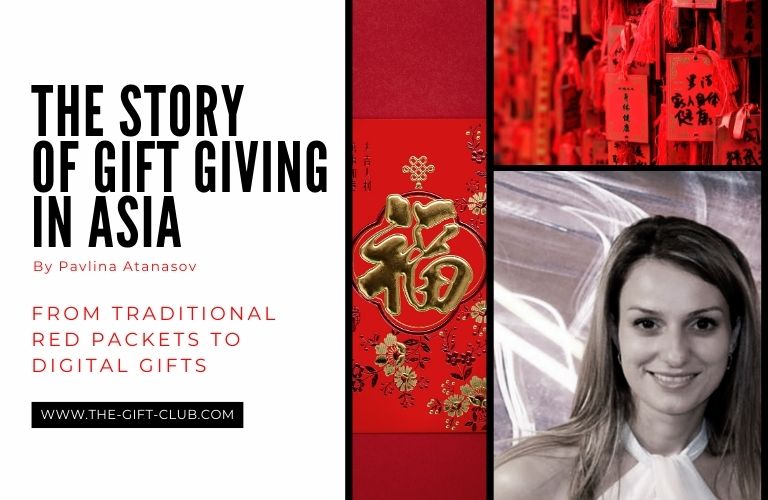There is ancient gift giving history in Asia. As society has changed and times have evolved the tradition of festive giving remain the same on the continent. In Asia the gift giving etiquette follows strict set of rules based on traditions, superstition, and even numerology. The rules apply when giving and receiving gifts. Traditionally most of south east Asian and China societies have been giving small packets (envelopes) containing cash. In China, Singapore, Vietnam the Red Packet is given to young people in the families for Lunar New Year. In Japan the tradition is similar but the packets are colourful prints and in Malaysia and Indonesia the packets are green, which is Malay and Indo adaptation of the Chinese red envelope custom which they hand to visitors of their homes during the festival of Eid ul-Fitr.
Festivities in Asia have been accustomed with the red/green packets given as a form of respect and sincere gratitude and reward to thank one another.
The Gift Giving Initiative
Over time many businesses adopted this and started to give customers/ employees/ partners empty red packet envelopes with their logo on it. Different business verticals saw the need to be part of the gift giving initiative such as the biggest shopping malls, department stores, grocery shops, retailers and banks and they started using the red packet giving tradition to show respect to their loyal customers, employees, clients and partners by providing them a set of branded envelopes as well as rewarding them with cash in a packet/envelope as a form of corporate gifting.

As an introduction, the context behind the red packets and the role that it takes in todays rewards, incentive and loyalty programs for key retailers to meet their consumer engagement imperatives, the physical gift voucher also became part of the packets giving tradition and bought as a form or reward adopted from corporates.
In the beginning, the gift cards were vouchers (accounting documents representing an internal intent to make a payment to an external entity) and were only used in groceries and department stores where the vouchers were considered as bonds or banknotes. With no expiry date, keeping value over the time.

Vouchers became inseparable part of the loyalty programs and pear to pear gifting scene across markets. Branded vouchers became more and more popular designed to turn customers into loyalty users.
Loyalty programs and solution providers have been using vouchers as one of the main tools for decades to reward their customer for desired behaviour and boost repetitive buying and footfall into stores and increase stickiness of the user to their brand or services.
With the use of physical vouchers, both, the brands and the purchasers being enterprise or individual has been challenged to process and collect significant data to analyse and optimise performance. For years in Asia the retailers have been issuing all paper vouchers with very little technology behind it and beside big grocery chains and multi outlet stores there were no successful programs at all.
The Physical Voucher Challenge
For markets like Vietnam, Indonesia, China, India, Thailand and Philippines with low urbanization rate of the population, the physical vouchers post challenges in terms of procurement, delivery, execution and usage perspective. That’s why for the above markets, conventional vouchers and their modern form physical gift cards penetration is very low or it never existed. Of course, we are excluding the big shopping malls and grocery stores here.
With the advancement of technology, especially internet and mobile and the spread of on-line more and more people have gained access to retail and can be reached at anytime on their mobile devices.
Then was the time where the rewards had to change to cover a broader range of use.
An Alternative Solution – the age of Digital
Telcos, banks and payment provider had to investigate alternative solutions and finally digitalisation. And of course, the first thing they had to do was to change from the red packet stuffed with shiny new banknotes to e-Angbao (In Chinese: gift of money packed into a red packet). WeChat and AliPay, the two big payments providers in China were the first to popularise sending real money or real value as a gift digitally. And this is how the digital gifting via e-GiftCards evolved in Asia, skipping entirely the stage of physical cards.

The driving factor in the digital adaptation and switch from cash to e-GiftCards was of course corporates. Moving to digital eGfits, unlike the physical vouchers, is easy to procure, easy to distribute via multiple delivery channels, it is instant, and of course every step can be tracked and performance and consumption data captured. And compared to sending unbranded cash cards, the corporates can define where and how the rewards will be spent.
That’s way the most preferable choices are products where the recipient can maximise value of the reward like eWallet (which are consider as good as cash) or eCommerce services where the single dollar value can be doubled.




